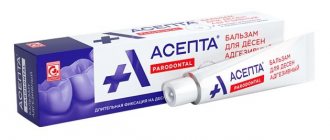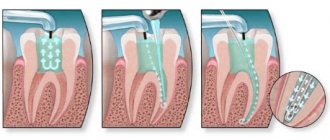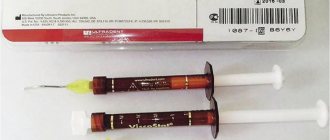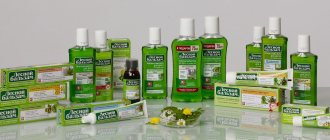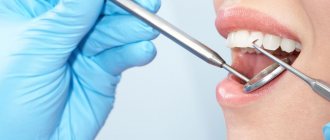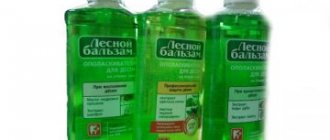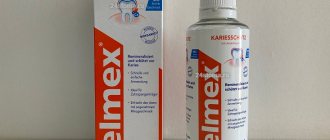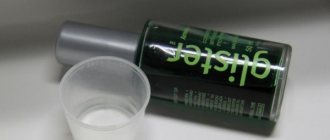The latest methods for treating dental periodontal disease are offered today by many clinics and health centers. The main cause of the common disease is degeneration of periodontal tissues caused by improper tissue nutrition. True periodontal disease is a rather rare disease; many people mistakenly understand various gum diseases by this term or confuse it with periodontitis. The latter disease has significant differences; its main symptom is a decrease in the height of the gums, as a result of which the roots of the teeth are exposed.
All diseases of the oral cavity pose a serious danger and require timely and high-quality treatment. If you leave the first signs of the disease unattended, there is a risk of losing teeth and developing serious gum pathologies. Such risks are superficial; periodontal disease can cause a number of diseases of internal organs and systems:
- diseases of the gastrointestinal tract;
- chronic intestinal and urinary tract infections;
- frequent colds;
- diseases of the ENT organs.
Diseased teeth and gums are a source of constant infection, which can enter any organs with saliva and consumed food. Patients with periodontal disease often complain of gastrointestinal diseases, which can be caused by insufficient processing and grinding of food in the oral cavity. They are more susceptible than others to frequent intestinal disorders and diseases caused by chronic urinary tract infections.
Diseased gums are a serious risk factor for the development of ARVI and influenza, since they represent a source of constant infection that weakens the body’s natural defenses. Finally, the disease causes great aesthetic inconvenience, so treating gum periodontal disease is the goal of many people. Only recently have they begun to pay significant attention to the study of the disease and methods of its prevention. The first step in getting rid of a serious disease is an examination that allows you to identify the causes of the disease. Eliminating these causes is the only sure way to get rid of periodontal disease.
Causes of gum disease
Many people mistakenly believe that periodontal disease is caused by gum inflammation. In fact, we are not talking about any inflammatory processes in this case; the main cause of the disease is a malnutrition of periodontal tissues. If dental periodontal disease treatment is not started promptly, the disease can affect the deep tissues of the gums and lead to complete tooth loss. There are many reasons why periodontal disease can develop, here are some of them:
- malocclusion;
- atherosclerosis;
- hypertonic disease;
- serious disorders of the central and peripheral nervous system;
- avitaminosis;
- metabolic disorders;
- hereditary predisposition.
The reasons why many people try to correct their bite in childhood are not only aesthetic preferences. A correct bite is the key to healthy teeth and gums. Common diseases of the cardiovascular and nervous system can lead to disruption of proper and adequate periodontal nutrition. Periodontal disease is a frequent companion to hypertension, atherosclerosis, diabetes mellitus and other diseases of the heart and blood vessels. An unhealthy lifestyle and an unbalanced diet are a serious risk factor, which sooner or later may require treatment for periodontal disease and its consequences. Gums and periodontal tissues are sensitive to a deficiency of minerals and vitamins, so an unbalanced diet and lack of nutrients can lead to disorders in the oral cavity.
An excellent prevention of periodontal disease is the regular consumption of fruits and vegetables rich in vitamin C. For proper nutrition of the gums, fatty acids and amino acids are important, a valuable source of which is seafood. Regular consumption of solid foods allows for a natural massage of the gums and helps strengthen them. Speaking about risk factors for the development of periodontal disease, it is worth noting excess weight. With excessive body weight, metabolic processes are disrupted, organs and tissues experience a deficiency of oxygen and nutrients. People whose close relatives have had or are currently suffering from periodontal disease should be attentive to their health status. Recent studies have established that the disease is hereditary in nature.
Indications and contraindications
Residents of coastal areas use Dead Sea mud to treat almost all diseases. Main indications for use:
- diseases of the respiratory system, as well as during the rehabilitation period after surgery;
- inflammation in the nose, throat, ears, tonsillitis;
- nervous system disorders;
- ailments of the digestive tract;
- skin diseases and infections;
- problems with the musculoskeletal system;
- ailments of the pelvic organs and genitourinary system;
- all types of disorders in the functioning of joints and bones, inflammatory processes, arthritis, osteochondrosis;
- injuries and periods of rehabilitation, sprains, tendon ruptures, sprains, fractures;
- myositis;
- trophic ulcers;
- bursitis;
- osteomyelitis.
Expert opinion
Anna Lebedeva
Tourism expert in Israel
Many people can feel an improvement in their condition only after undergoing a course of treatment with healing mud. As a rule, procedures are carried out in sanatorium-resort institutions, but if desired, a spa resort can be arranged at home.
But since mud has a powerful effect, it should be used only as prescribed by a doctor. In addition, there are a number of cases when the use of applications may be limited or completely contraindicated. Namely when:
- acute form of inflammatory processes;
- oncological and benign neoplasms;
- diseases of the circulatory system;
- late forms of diabetes;
- high blood pressure;
- disturbances in the functioning of the endocrine system;
- jaundice;
- bearing a child;
- allergies and individual intolerances.
In some cases, the use of therapy is not recommended for patients over 60 years of age.
Treatment methods for periodontal disease
It is difficult to completely cure periodontal disease using classical medicine methods; for some, it takes years to fight the disease. The most important goal of treatment is to restore healthy nutrition to the gums; when this goal is achieved, the disease will go away on its own. However, it is not always possible to identify the reason why periodontal nutrition has been disrupted. In this case, treatment of periodontal disease in adults is reduced to slowing down the course of the disease, but it is not possible to completely restore the function of the affected tissues. Common healing techniques used by classical medicine are:
- drug therapy;
- physical therapy;
- phytotherapy;
- gum massage;
- laser therapy;
- dental strengthening of mobile teeth;
- use of special toothpaste and gels.
All of the above treatment methods have one drawback - the need for long-term use. Drug therapy is based on the use of drugs that enhance the nutrition of the gums, increase the elasticity of blood vessels, and also regulate metabolic and hormonal processes. It is difficult to select effective medications for periodontal disease due to existing contraindications and side effects, as well as the individual characteristics of the body.
Among the physical treatment procedures for periodontal disease, electrophoresis and phonophoresis remain in demand. They help normalize the oxygen balance in tissues, promote the removal of free radicals, and also reduce tissue hypoxia. Considering that physical therapy must be carried out directly on the gums, such procedures cause a lot of discomfort. A more modern method is laser therapy, as well as vacuum massage.
As a complement to the main treatment, herbal medicine is used - mouth rinsing balms prepared from natural herbs. Patients with periodontal disease need daily use of special toothpaste and other oral care products aimed at eliminating the causes of the disease. If the disease has reached a serious stage and some teeth have become mobile, you will need the help of a professional dentist. A common procedure for periodontal disease is splinting mobile teeth, which prevents their loss and further increase in interdental spaces.
Symptoms and prevention of gum disease
Any disease is easiest to prevent and treat in the initial stages, so it is important to know and be able to independently identify the first signs of periodontal disease. People of middle and mature age are susceptible to the development of the disease; periodontal lesions are rare in childhood. For everyone who is now interested in the treatment of periodontal disease, the symptoms of a developing disease could be as follows:
- swelling of the gums;
- pain when brushing teeth and eating solid foods;
- presence of bad breath;
- sensation of itching and burning on the gums;
- pale gums;
- Excessive bacterial plaque on teeth;
- bleeding gums;
- the appearance of loose teeth.
It is important to understand that such symptomatic manifestations also occur in other oral diseases. Only a doctor can accurately diagnose the disease after a visual examination and tests. It is important not to ignore such symptoms and to undergo regular examination by a dentist; he will help to identify a developing disease in time and prescribe gentle and effective treatment.
The main prevention of periodontal disease is control of oral hygiene, as well as a balanced diet and the elimination of the above risk factors. To provide your teeth and gums with complete daily care, it is necessary to use high-quality toothpaste and rinsing balms, as well as a gentle toothbrush with soft bristles. Using dental floss and other oral care accessories will significantly reduce the risk of developing the disease. Dentists recommend avoiding unnecessarily necessary procedures that can injure tooth enamel and gum tissue; all oral care procedures should be performed only in specialized dental clinics, and not in beauty salons.
Useful video
Watch the video about treatment at the Dead Sea:
Similar articles
- Holidays in Israel - how and where is the best way to relax?
The hot desert climate, significant oxygen content in the air, and a complex of unique minerals in the waters and mud of the Dead Sea provide excellent therapeutic treatment, which has no analogues in the world. Read more - Ein Gedi - a fabulous oasis on the shores of the Dead Sea
In the place where the lifeless mountains of the Judean desert descend to the very shore of the Dead Sea, there is Ein Gedi, literally translated - the goat spring. Read more
- Seas of Israel | Dead Sea
Along the entire Israeli coast, nature has created unique thermal springs and places with deposits of black, healing mud. ... Treatment at the Dead Sea will undoubtedly improve your health and well-being! Read more
- Dead Sea - Ein Gedi
Dead Sea - Ein Gedi. In early spring, in Israel the temperature allows swimming only in the Dead Sea. Although it’s hard to call it swimming - you lie on your back and flop around like a cork. Read more
- We are going on holiday to Israel in April
What could be better than bask on the hot sand, smear yourself with mud by the Dead Sea or see exotic fish on the coral reef in Eilat Read more
Treatment of periodontal disease in a sanatorium
An alternative to classic hospitals and dental clinics are specialized sanatoriums that diagnose and treat periodontal disease. There are such sanatoriums in various regions of Russia; in their health centers they practice methods based on the use of natural ingredients. Unlike expensive medications, they do not have any side effects on the body; after sanatorium treatment, complications and side effects are excluded. Among the natural resources that are used in sanatoriums for the treatment of periodontal disease, it is worth highlighting:
- natural mud;
- sea and lake brine;
- mineral water;
- plant and mineral components;
- climatic factors.
Simple and painless procedures are used with these natural “medicines” to achieve the main goal - to restore healthy nutrition to the gums. Natural muds of various origins are widely used; they are used in the form of local applications and for some physiotherapy procedures. Natural muds have a pronounced disinfecting and regenerating effect, they allow you to quickly heal affected areas of periodontal disease and contribute to the overall strengthening of gums and teeth.
Previous NextRapa and mineral water are used for local irrigation, and they are also used to prepare healing mouth rinses. A disease such as periodontal disease, the causes and treatment of which are described above, requires an integrated approach to treatment. It is necessary not only to have a direct effect on the gums and teeth, but also to strengthen the body overall. For this purpose, climatotherapy is widely used; sun and air baths help regulate the functioning of organs and systems, and also help strengthen the immune system.
Spa healing programs can be supplemented with balneotherapy and halotherapy sessions; they help restore the balance of rare minerals and chemical compounds in the body, and also have a beneficial effect on the functioning of the cardiovascular system. Even local mud applications and the use of brine have a complex effect on the body. Natural balm regulates metabolic processes, normalizes hormonal levels and replenishes the balance of microelements in the body.
Improvement of gums in Crimea at the Saki resort
Some of the best sanatoriums in Russia that treat and prevent oral diseases are located on the territory of the Crimean Peninsula. The formation of first-class health resorts here became possible thanks to natural resources, which today are actively used for the benefit of health. Crimea has a special climate, which was formed due to its close location to the sea and the abundance of vegetation. Staying in such a climate and swimming in the sea helps strengthen the body, prevents common diseases and helps improve immunity. On the territory of the Crimean peninsula there are estuary lakes that serve as a source of medicinal mud and brine. For a disease such as periodontal disease, prevention and treatment is carried out using the following methods:
- mud applications on the gums;
- irrigation with brine solution;
- physiotherapy using brine and mud;
- manual and hardware massage of gums;
- restorative procedures (sun and air baths, balneotherapy sessions).
Such an integrated approach to eliminating the disease allows you to achieve the main goal - to restore proper nutrition of the gums and periodontium, as well as prevent the re-development of the disease. At the Saki resort, the multidisciplinary sanatorium “Sakropol” welcomes guests, which also deals with the treatment of oral diseases. It is located next to Lake Saki, the silt mud and brine of which is considered the most valuable in the region.
The sanatorium has a mud therapy and balneotherapy department, as well as a hardware physiotherapy department. Its clients have access to the services of a diagnostic center, and they can also visit a dental office and get advice from specialists. Guests of the Sakropol sanatorium will have the opportunity not only to spend their vacation with health benefits, but also to enjoy their favorite resort entertainment. Not far from the Saki resort there are sandy beaches, natural attractions and entertainment centers, and here is also the largest water park in Crimea, “Banana Republic”.
Benefits for joints
Applications and compresses with Dead Sea mud help with joint diseases. They reduce pain, relieve inflammation and improve blood circulation in tissues. A course of compresses with mud accelerates recovery. Indications for treatment are all types of diseases and disorders:
- all stages of rheumatoid arthritis;
- polyarthritis of infectious origin;
- deforming osteoarthritis;
- osteochondropathy;
- joint pain as a result of past injuries;
- inflammatory processes;
- all types of arthrosis;
- fractures, sprains and dislocations.
The procedure for applying a compress consists of heating the paste with mud to the desired temperature and distributing it in an even layer on the affected area. Then the area is covered with plastic wrap and the patient with a warm blanket.
The procedure lasts about 20 - 30 minutes. It starts for a short period of time, then gradually increases. The course usually consists of 12 - 15 procedures performed every or every other day.
Expert opinion
Anna Lebedeva
Tourism expert in Israel
There are two types of treatment - intensive and gentle. The first involves heating the mud to 40 - 42C and applying it for 30 minutes. The course consists of 15 procedures, which are carried out every 2 - 3 days. A more gentle option means that also heated mud to 38 - 40C is applied for only 10 minutes. A total of 10 - 15 procedures are performed.
Often, mud therapy is one of the components of complex joint restoration, which is combined with anti-inflammatory and physiotherapy. As a result, healing occurs much faster.
As a result of mud therapy, lymph flow improves. Tissue nutrition becomes more active, pain is relieved, and water-salt metabolism is normalized. This way the function of the joint is restored.
